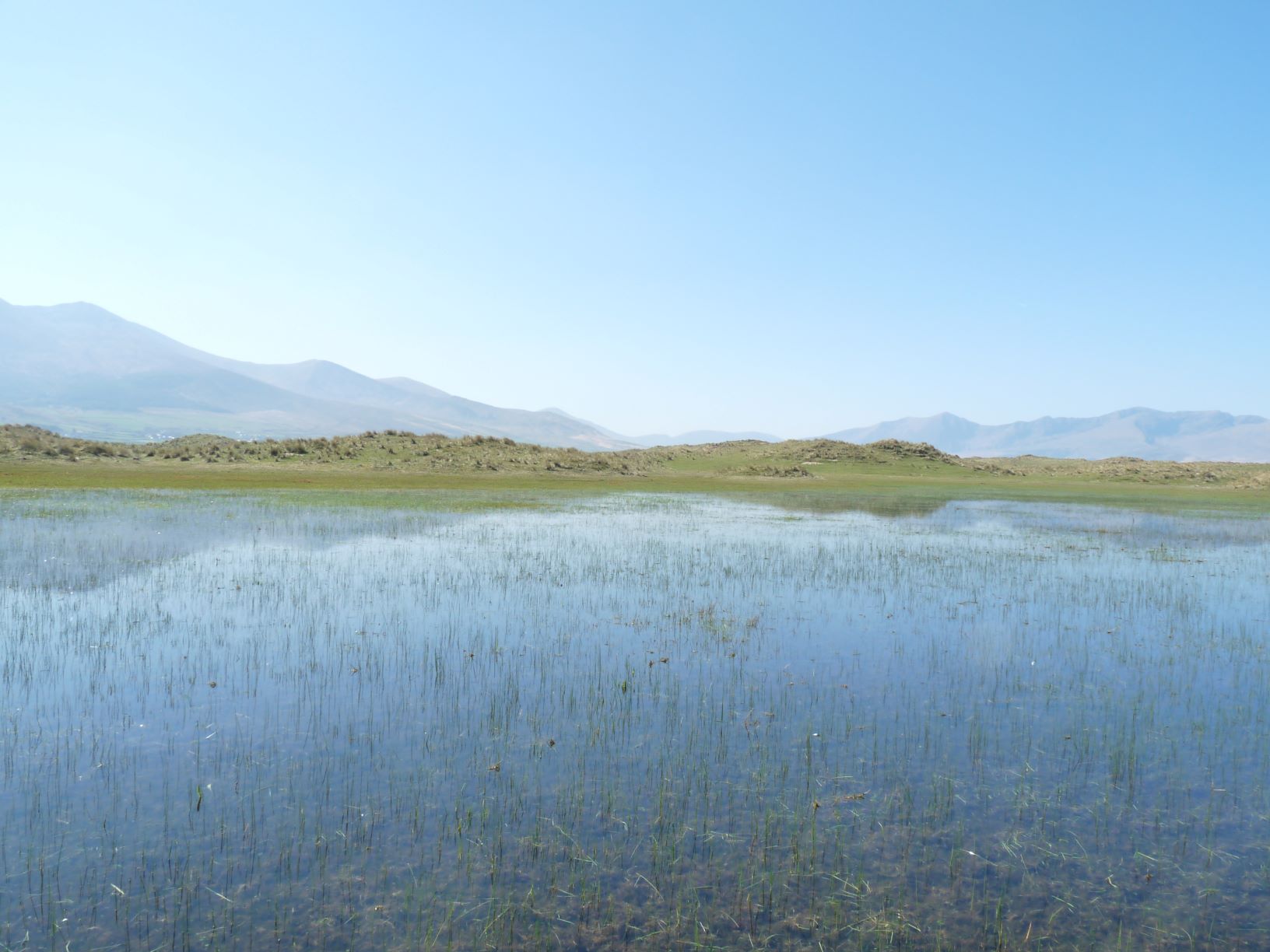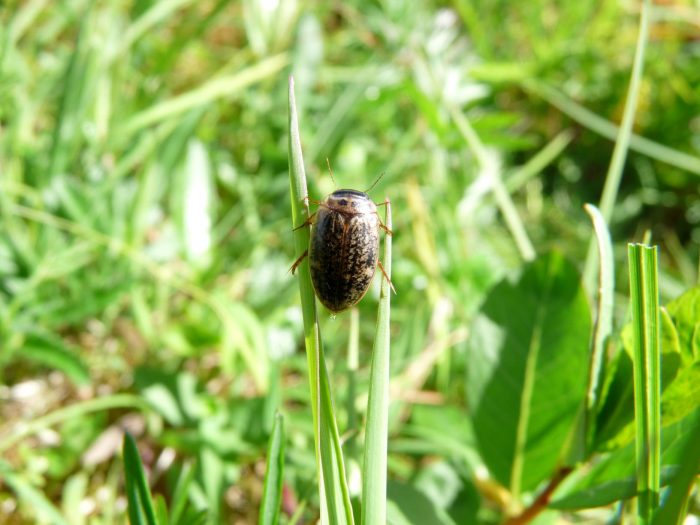
Seasonal wetlands experience frequent disturbance, which can interfere with the effectiveness of indicator species in habitat monitoring. In our paper in Ecological Indicators, we show that the simplest monitoring approach can yield misleading results.
Biodiversity, the set of organisms living on earth in all their variety, is in crisis. International organizations such as the World Wildlife Fund and leading scientists have repeatedly sounded the alarm, pointing out that the range and abundance of life forms are decreasing rapidly, and that we may lose benefits derived from nature like pollination and soil fertility.
To combat biodiversity loss, conservation measures have been put in place around the world, and the European Union Habitats Directive is one such measure. The Habitats Directive aims to conserve over 230 selected natural habitats which occur in 28 countries in Europe through a network of protected areas. As with any good conservation program, a monitoring system is in place to assess its effectiveness, and, this year, in 2019, the status of protected European habitats will be reported. The scale of the work is enormous, and a detailed inventory of all species and environmental variables affecting each habitat would be prohibitively expensive and time-consuming. Using selected species as proxies or indicators of overall habitat condition offers a more achievable means of assessment and this approach is incorporated into the Habitats Directive.
The use of indicator species exploits a trend for patterns of diversity or species composition across multiple taxa to coincide. We call this cross-congruence, and it enables us to infer the conservation status of a habitat by assessing a small number of key species. However, cross-congruence is weaker in habitats which have experienced human disturbance, and little is known about diversity patterns in habitats which are characterized by regular natural disturbances. A disturbance is likely to reduce cross-congruence if different taxa respond differently to a change or if they exploit different resources in a habitat. If diversity or composition of different taxa using the same habitat does not coincide, then using indicator species could lead to misleading habitat assessments. Indicator species are widely used in conservation assessment, and so this is an issue that could affect protected habitats around the world.
We aimed to test whether diversity patterns across different taxa were consistent in a habitat characterized by frequent natural disturbance and whether a habitat assessment reliant on plants as indicator species reflected the provision of resources for organisms with contrasting habitat requirements. We focused on dune slacks: isolated freshwater wetlands occurring between the ridges in coastal sand dunes. They were an ideal model habitat because they are protected under the EU Habitats Directive, and so in many cases experience low human disturbance, but they flood in winter and dry out in summer, leading to regular natural disturbance. Because dune slacks can be small, we surveyed two small-bodied invertebrates which have been recommended as indicator species in the past (snails and water beetles) and compared their diversity and composition to that of plants, which are generally used as indicator species for the habitats protected under the EU Habitats Directive.

A water beetle in a slack at Kincasslagh, Co. Donegal, Ireland. Image courtesy Aoife Delaney
Plants, snails, and water beetles have shown cross-congruence in pond systems elsewhere, but they have contrasting environmental requirements, so they may respond differently to flooding and desiccation. Finally, we carried out a habitat assessment based on the methods used in the EU habitat assessments for Irish dune slacks, which incorporates plants as indicator species.
We found no evidence that the species richness or diversity of snails, water beetles and plants were correlated in dune slacks, and nor could the composition of plant species be used to predict the likely suite of beetles or snails at a site. No significant difference could be detected between the diversity or composition of snails or water beetle species at sites that passed and failed the habitat assessment.
In this case, cross-congruence between plants, snails and water beetles was not observed and a habitat assessment based on indicator species from a single taxonomic group, plants, failed to deliver information on the snail and water beetle species in dune slacks.
The contrasting biological requirements of the three species groups has probably led them to respond differently to disturbance. For example, six sites failed to flood during the year of survey, even though it was a wetter year than average, and three of these passed the habitat assessment. The water table may have risen sufficiently close to the surface to support the typical wetland plants, but flooding is vital for aquatic snails and beetles to persist, and the failure of a site to flood will dramatically change the snail and water beetle assemblages present in any year when flooding does not occur. Drying out is a major threat for dune slacks in the EU and it is of concern that the current conservation assessment methods are not adequate to detect sites which are at risk, as the damage may be permanent by the time the plant composition has changed.
The habitat assessment is intended to identify sites which contain habitat of good quality and those which require interventions to improve their habitat quality. We found ten species listed as vulnerable on the Irish Red Lists for snails and water beetles in sites that failed the habitat assessment, and they could be lost if management aimed at restoring the plant community is put in place. Because the diversity of plants, snails and water beetles in dune slacks are not congruent, the current habitat assessment methods put them in danger of misguided conservation interventions that could have a negative effect on biodiversity.
This might seem to be bad news, but there is a potential solution: selecting indicator species from taxa with contrasting biological requirements is likely to make the assessment more robust and reliable.
From billabongs to vernal ponds and from wadis to turloughs, seasonal wetlands occur all over the world and are home to vulnerable freshwater species. According to the most recent World Wildlife Fund Living Planet Report, freshwater ecosystems are suffering more severe losses than terrestrial or marine ecosystems, with population abundance declining by 83% between 1970 and 2014. Effective monitoring is a crucial element of biodiversity conservation, and a small change, widening the taxonomic range of indicator species used in habitat assessments, could make a big difference for freshwater biota.
These findings are described in the article entitled Principles of cross congruence do not apply in naturally disturbed dune slack habitats: Implications for conservation monitoring, recently published in the journal Ecological Indicators.









